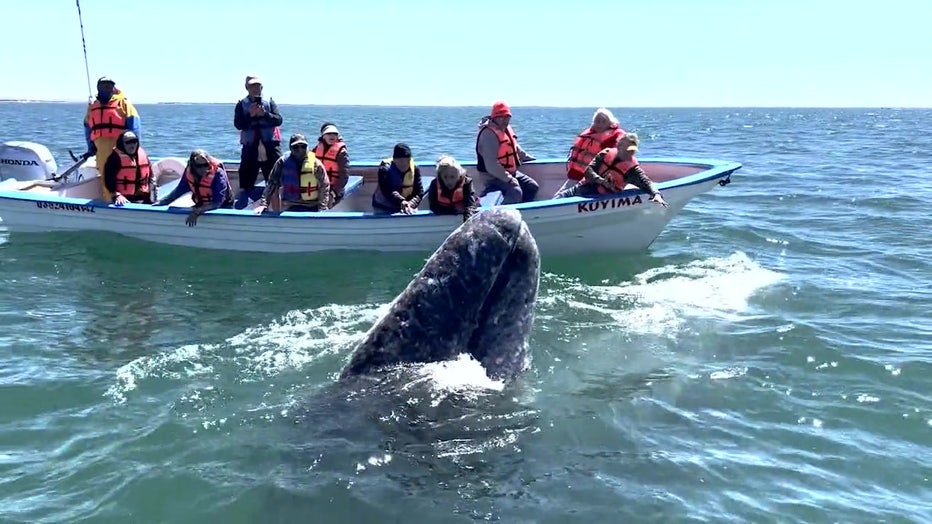Conservation group inspires passion for protecting whales at lagoon in Mexico
Saving the friendly California gray whales
At San Ignacio Lagoon in Mexico, The Whaleman Foundation is hoping to spread a passion for nature and conservation.
BAJA CALIFORNIA SUR, Mexico - There is one place on Earth where whales seem to seek out human touch, and it's a short journey from Los Angeles.
At the San Ignacio Lagoon in Baja California Sur, Mexico, California gray whales can be found sprawling out like dogs, itching for a scratch. The gray whale is now called the friendliest whale in the world, a far cry from its old nickname the devil fish — as the whales were known to overturn whaling boats.
The 700-mile journey from LA to the San Ignacio Lagoon pales in comparison to the nearly 12,000-mile journey the California gray whale takes from the Arctic. It's the longest migration of any marine mammal.

"There aren't many places like this left in the world where there's no real manmade development of any kind," said Jeff Pantukhoff, President and Founder of The Whaleman Foundation. "Here there's only eight ecotourism camps and two fishing camps. And beyond that there's nothing."
SUGGESTED: Atmospheric river storms tremendously help California’s drought conditions
Pantukhoff has been leading whale tours at the lagoon for nearly 30 years, now the area will be base camp for him and The Whaleman Foundation. San Ignacio Lagoon is one of two lagoons designated as a part of a UNESCO World Heritage Site because of their importance to the whale, seal and sea lion populations.

Pantukhoff said the area was nearly destroyed by a desalination plant, "that would have killed the entire desert ecosystem." The companies involved in building the pant said it would not have had any effect on the environment, but a similar salt plant built in Scammon's Lagoon, some 130 miles away, damaged the ecosystem. In 1998, Pantukhoff directed a film called "Gray Magic," exposing the damaging effects of the plant. The movie helped save San Ignacio Lagoon from a similar fate.
"If that salt plant would have been built, we wouldn't have this beautiful pristine mating and birthing lagoon for California gray whales," Pantukhoff said.
By bringing tours to the lagoon, where people can interact intimately with the whales, Pantukhoff said people can see the importance of protecting the animals and the enviroment.
"Nature has an intrinsic value which you can't put any dollar signs on," Pantukhoff said.
Carlos Tomas Varela has been a guide on the lagoon for nearly 30 years. He said that when people come to the lagoon they're "changed, because they receive a lot of magic love from the whales."
So what makes California gray whales so friendly? Pantukhoff said he thinks it may have been a learned behavior from a friendly mother whales, passed down to calves.
"You don't really see that from any other type of whale in the world," said Captain Delaney Trowbridge, a Naturalist with Newport Whales. "It's a really unique interaction where it is occurring 100% on the whales' terms. They are the ones seeking out the boats, swimming up to them, often spy hopping, sticking their heads out of the water, rolling over presenting their bellies, and even in some cases presenting their calves."
Trowbridge said while people can't touch gray whales anywhere outside a small part of San Ignacio Lagoon, she hopes the impact of seeing the whales has the same result.

"Showing them to people and showing people them provides this really cool opportunity to inspire people to both conserve and protect these species and the spaces that they call home," Trowbridge said.
That conservation becomes even more important at a time when the National Oceanic and Atmospheric Administration says the gray whale population is down nearly 40 percent from its peak.
For more information on Pantukhoff's work and The Whaleman Foundation, visit whaleman.org.

